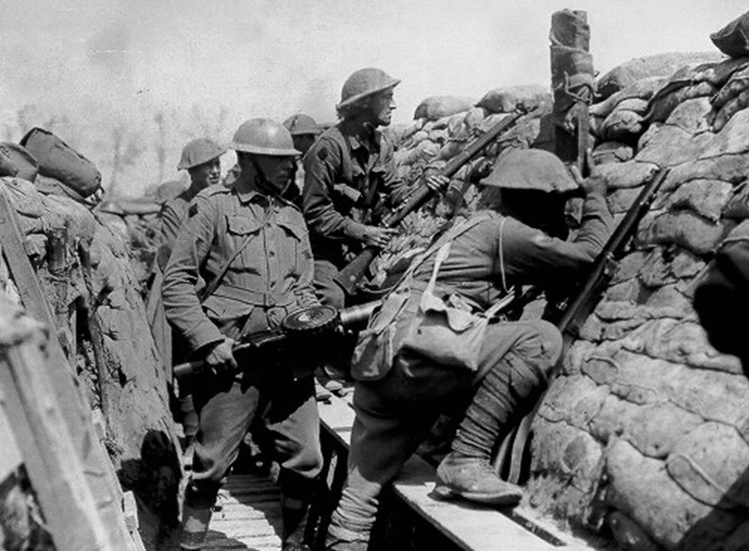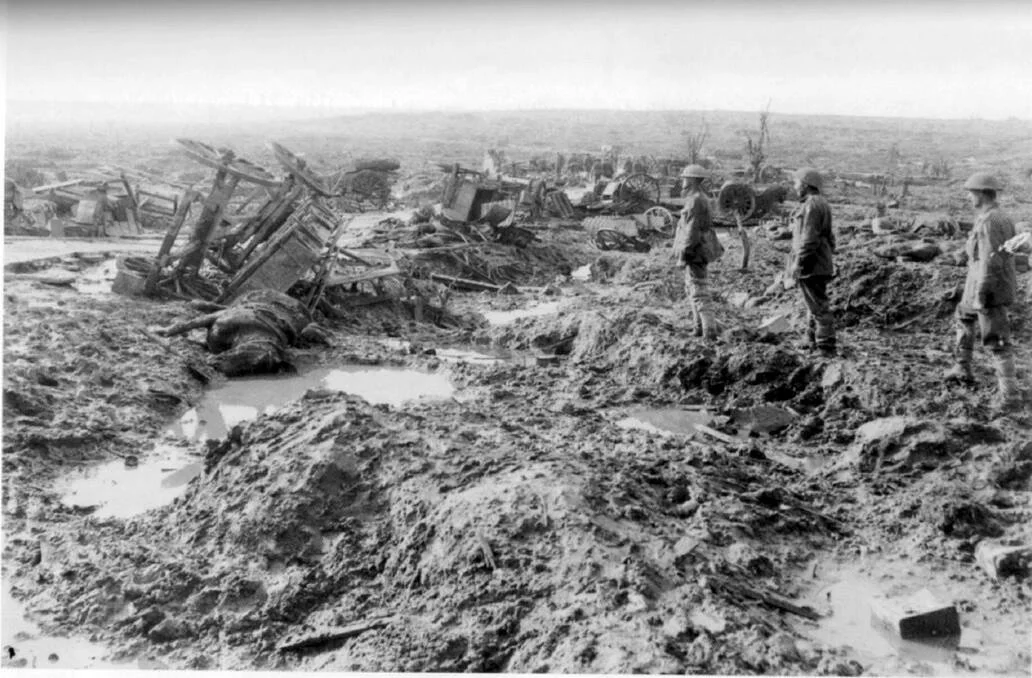Task 3. Western Front Sources
The Western Front was a major theatre of World War I, where the largest number of Australian troops saw action. It ran for 700 kilometres from the Belgian coast through France to the Swiss border. The fighting began when Germany invaded Belgium in August 1914, and the British Empire sent an expeditionary force to help repel the Germans.
The Western Front was characterised by trench warfare, and between March 1916 and November 1918, more than 295,000 Australians served there. It was Australia's most costly campaign in human terms, and the high number of deaths shaped the way Australians viewed the war on the home front
Sources Analysis Answer Guide
Hints and tips for a successful source analysis:
Quote often and begin your response with name of the author, not the Source number. Put the source number in brackets at the end of the quote/paraphrasing.
EG: ‘Lamb shows two examples of the importance of religion in Ancient Greece. ....' (Source 1)
Always use full sentences and include the question in your answer
Use the mark scheme to guide your answer.
Two marks means you need to make two clear points.
Three marks means you need to make three clear points.
For example:
This is supported by Jones who states that 'History students would be more popular at parties if they used this method.' (Source 3)
Source 2. Photo. A bog too far. The battle of Ypres. 1917. The Canberra Times
The third Battle of Ypres (1917), known as Passchendaele, was infamous for its mud and heavy casualties
Questions
Use information from the source to describe the conditions experienced by soldiers at the third Battle of Ypres. (2)
Source 3. General Rees, commander of 94th infantry Brigade at the Somme,
British commander General Rees describing how his men went into battle on the 1st July, 1916.
'They advanced in line after line, dressed as if on parade, and not a man shirked going through the extremely heavy barrage, or facing the machine-gun and rifle fire that finally wiped them out. I saw the lines which advanced in such admirable order melting away under the fire. Yet not a man wavered, broke the ranks, or attempted to come back. I have never seen, I would never have imagined, such a magnificent display of gallantry, discipline and determination. The reports I have had from the very few survivors of this marvellous advance bear out what I saw with my own eyes, viz, that hardly a man of ours got to the German front line.'
Questions
What does the source show about the attitude of British commanders to casualties on the western front? (2)
Source 1. The Private Papers of Field Marshal Haig (Commander-in-Chief in France) 1914-1919
General Haig was the British commander of the Allied forces at the Battle of the Somme.
‘I spent some time today with the Canadians. They are really fine disciplined soldiers now and so smart and clean. I am sorry to say that the Australians are not nearly so efficient. I put this down to Birdwood, who, instead of facing the problem, has gone in for the easier way of saying everything is perfect and making himself as popular as possible. We have had to separate the Australians into Convalescent camps of their own, because they were giving so much trouble when along with our own men and put such revolutionary ideas into their heads.
Questions
How does General Haig contrast the Canadian soldiers with the Australian soldiers? (2)
Source 4. James Lovegrove. Interview 1993
Private James Lovegrove served at the Battle of the Somme in the British Army.
'The military commanders had no respect for human life. The commanders and General Douglas Haig... cared nothing about casualties. Of course, he was carrying out government policy, because after the war he was knighted and given a lump sum and a massive life-pension. I blame the public schools who bred these ego maniacs. They should never have been in charge of men. Never.'
Questions
How does the information in source 3 support the information in source 4? (2)
Source 5. Memoirs of the Western Front. With a Machine Gun to Cambrai. A. Coppard 1969
Arthur Coppard, was a British soldier who fought at the Battle of the Somme, he recorded his observations in a diary that was later published.
'The Germans must have been reinforcing the wire for months. It was so dense that daylight could barely be seen through it. Through the glasses it looked a black mass … How did our planners imagine that Tommies (British soldiers), having survived all the hazards – and there were plenty in crossing No Man’s Land – would get through the German wire? Had they studied the black density of it through their powerful binoculars? Who told them that artillery fire would pound such wire to pieces, making it possible to get through? Any Tommy could have told them that shell fire lifts wire up and drops it down, often in a worse tangle than before.'
Questions
Is the source a primary or a secondary source? Explain how you decided with specific reference to this source. (2 mark)
Source 6. Memoirs of Corporal WH Shaw, Royal Welsh Fusiliers. 1916
'Our artillery hadn’t made any impact on those barbed-wire entanglements. The result was we never got anywhere near the Germans. Our lads were mown down. They were just simply slaughtered. You were either tied down by the shelling or the machine-guns and yet we kept at it, making no impact on the Germans at all. And those young officers, going ahead, they were picked off like flies. We tried to go over and it was just impossible. We were mown down.'
Question
Use evidence from all of the sources to describe the reasons for the Allied failure in the Battle of the Somme. (5 marks)


